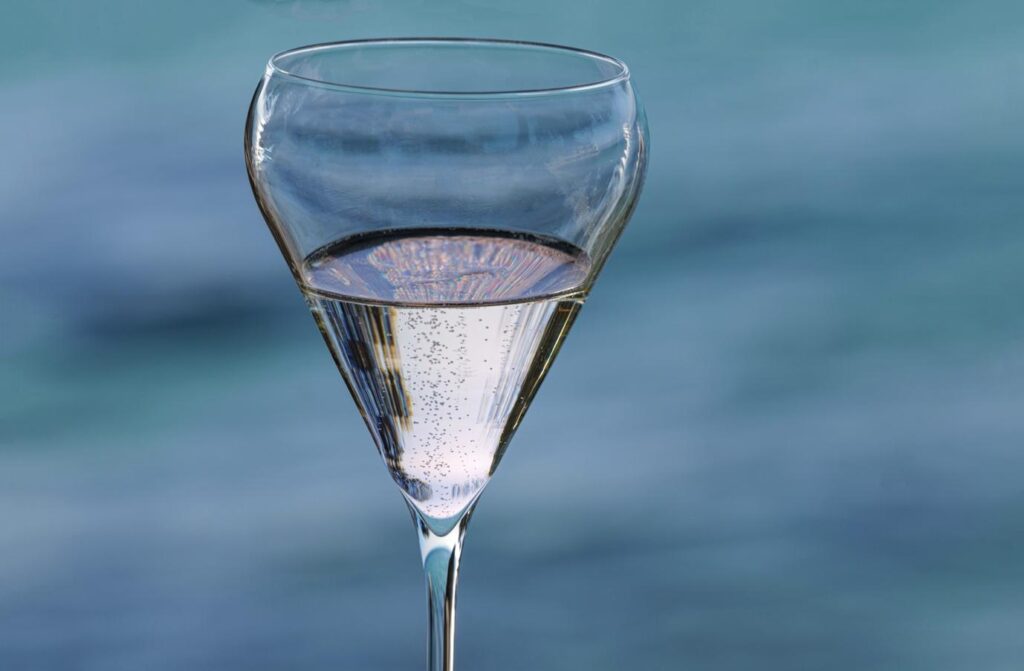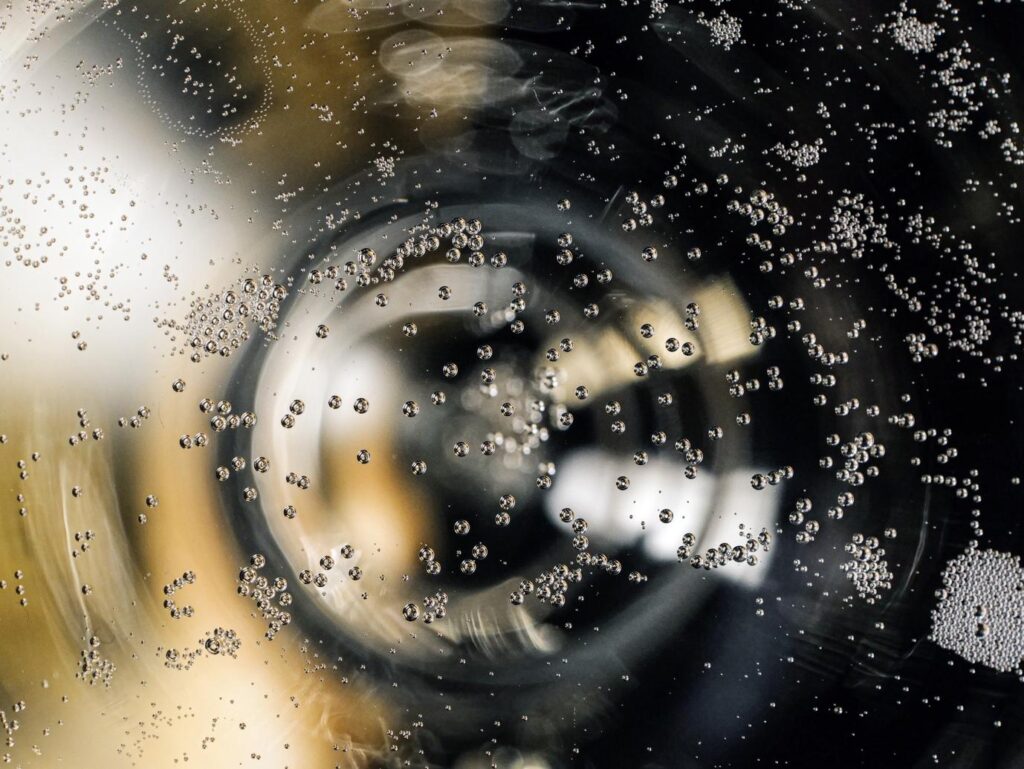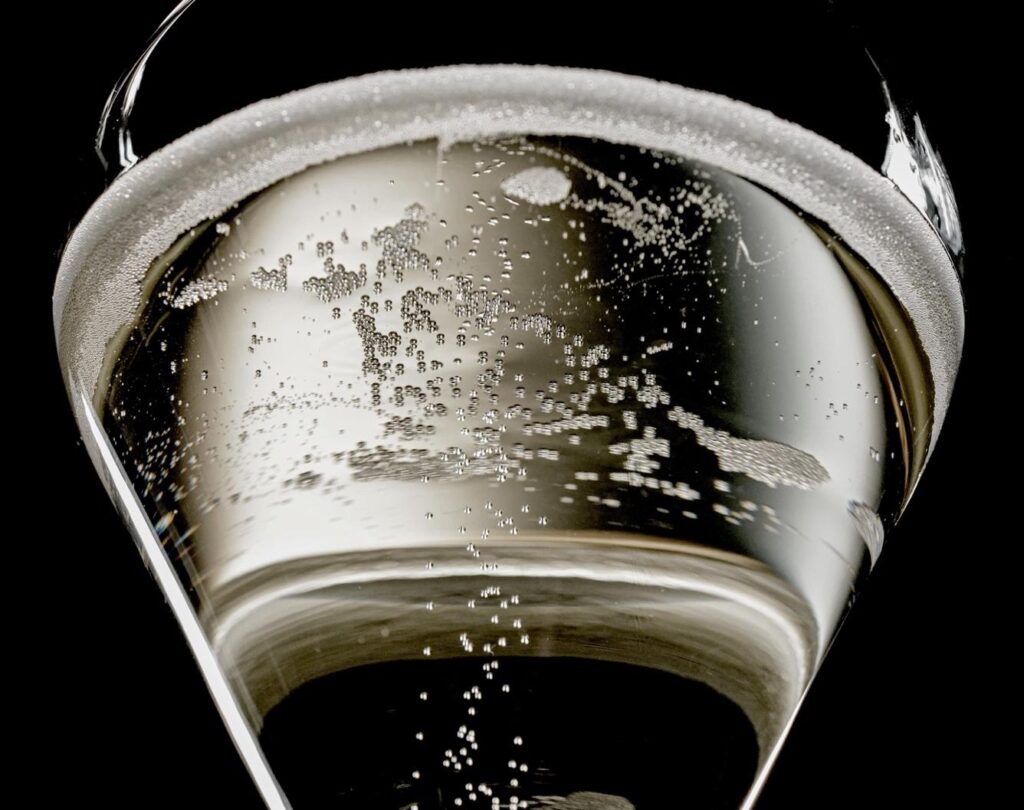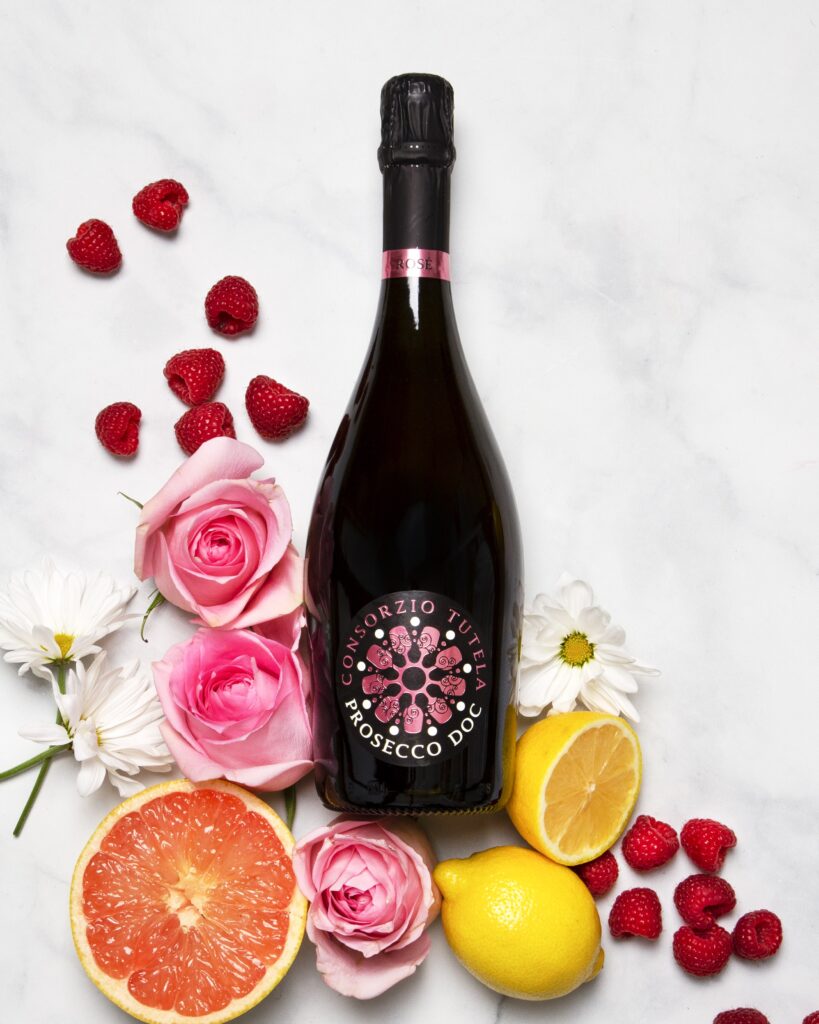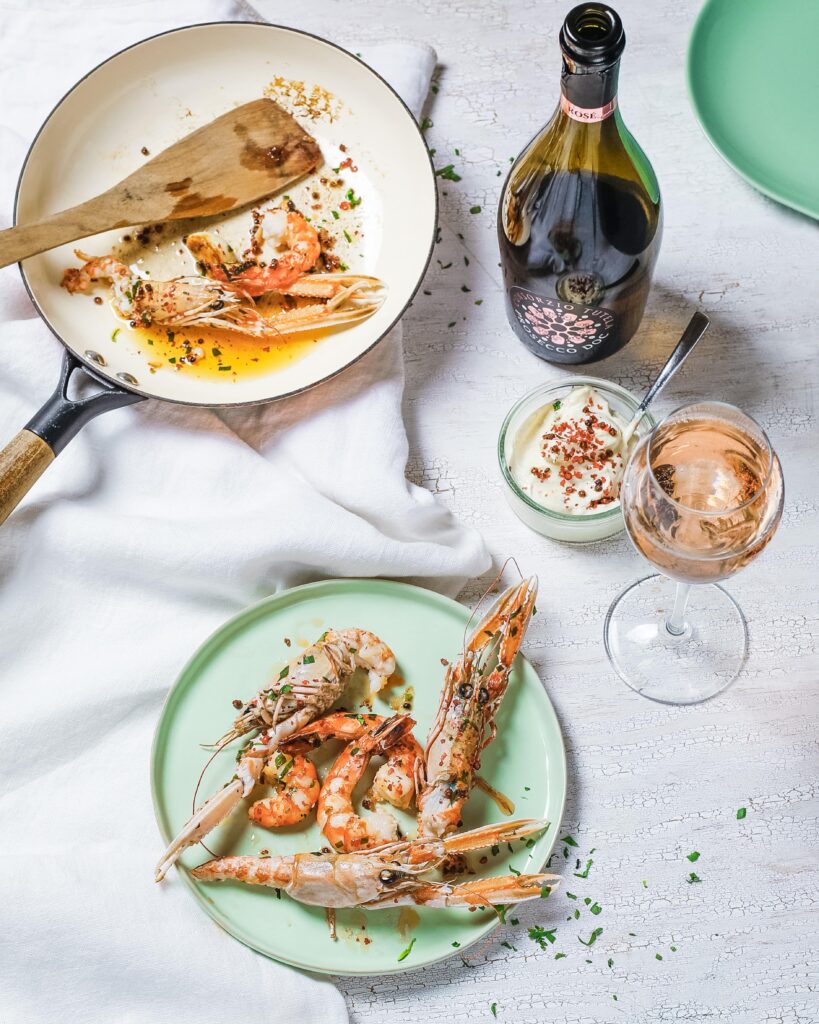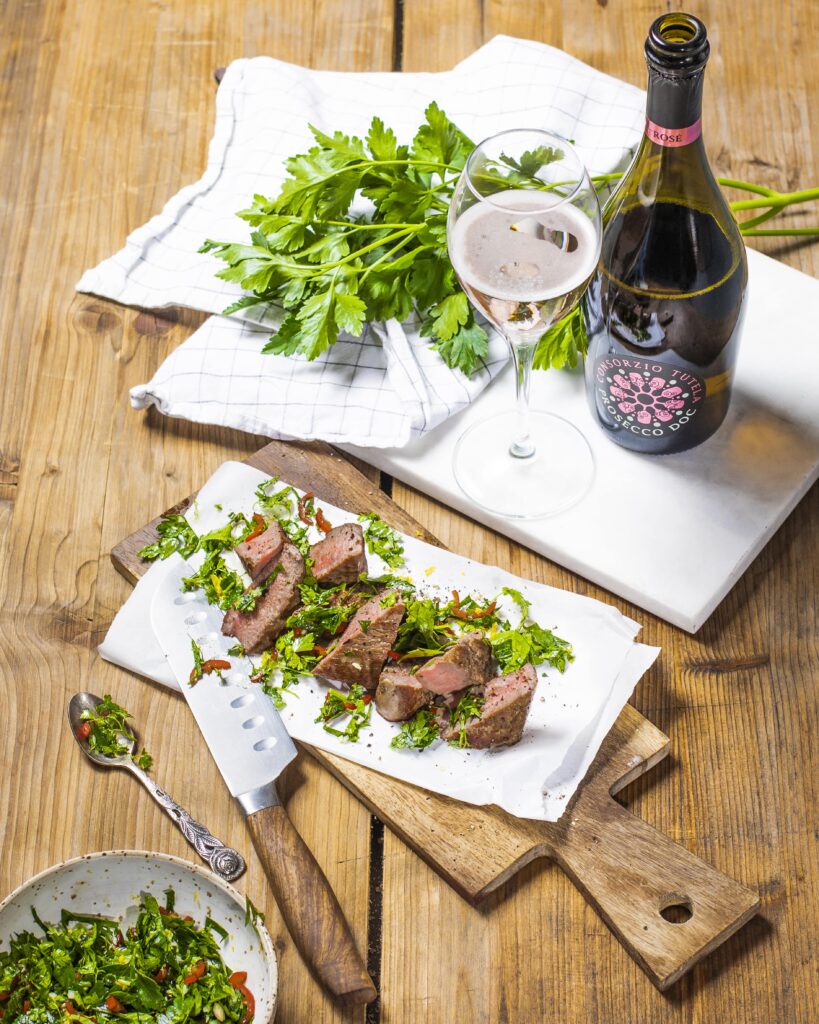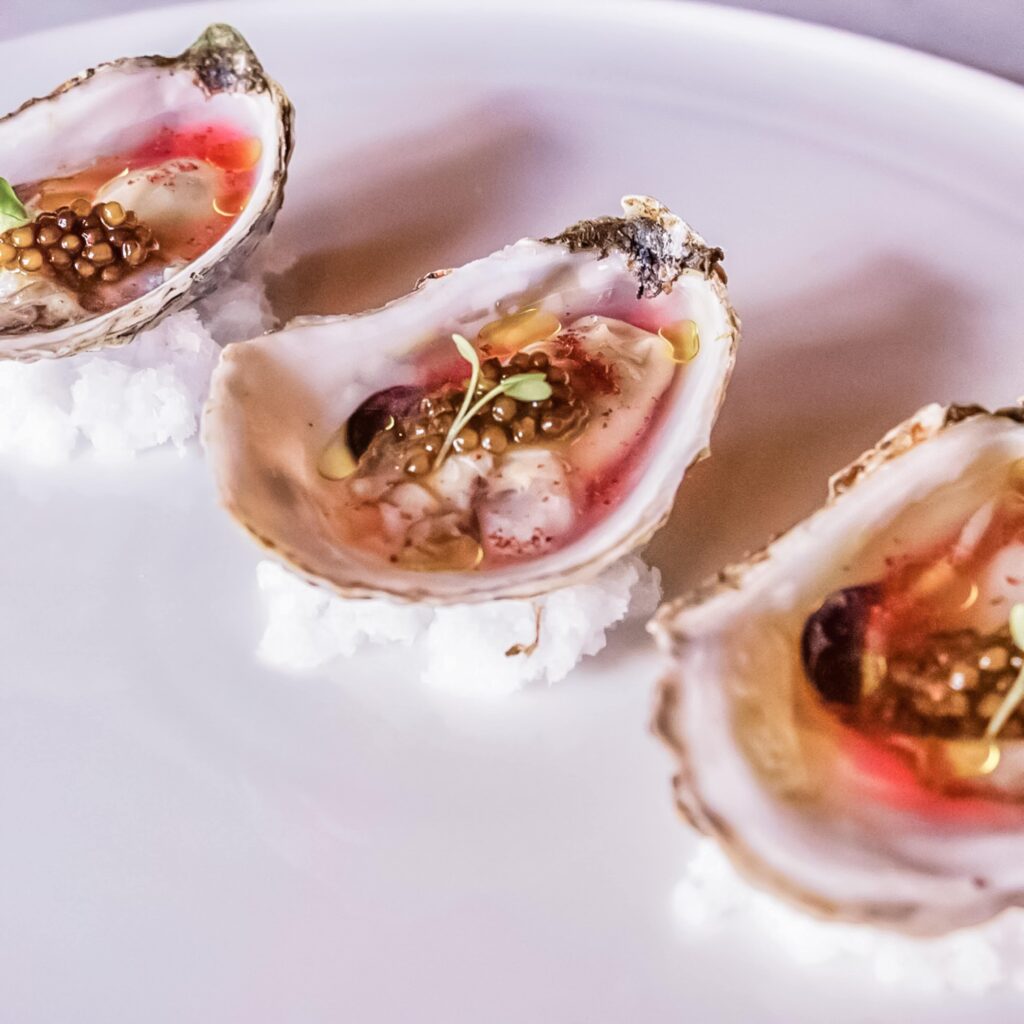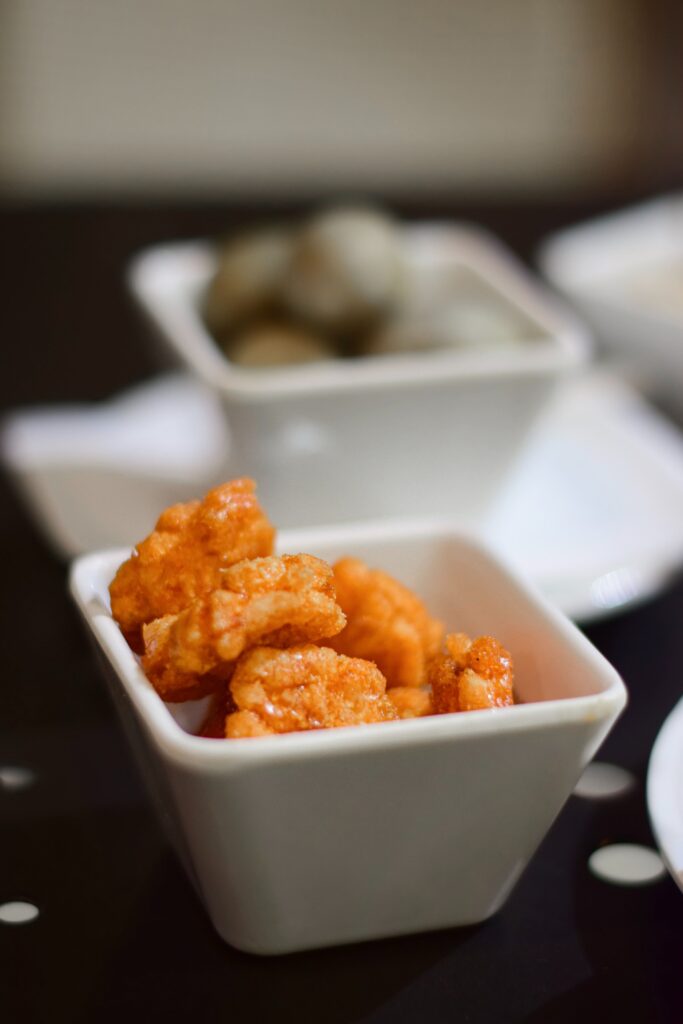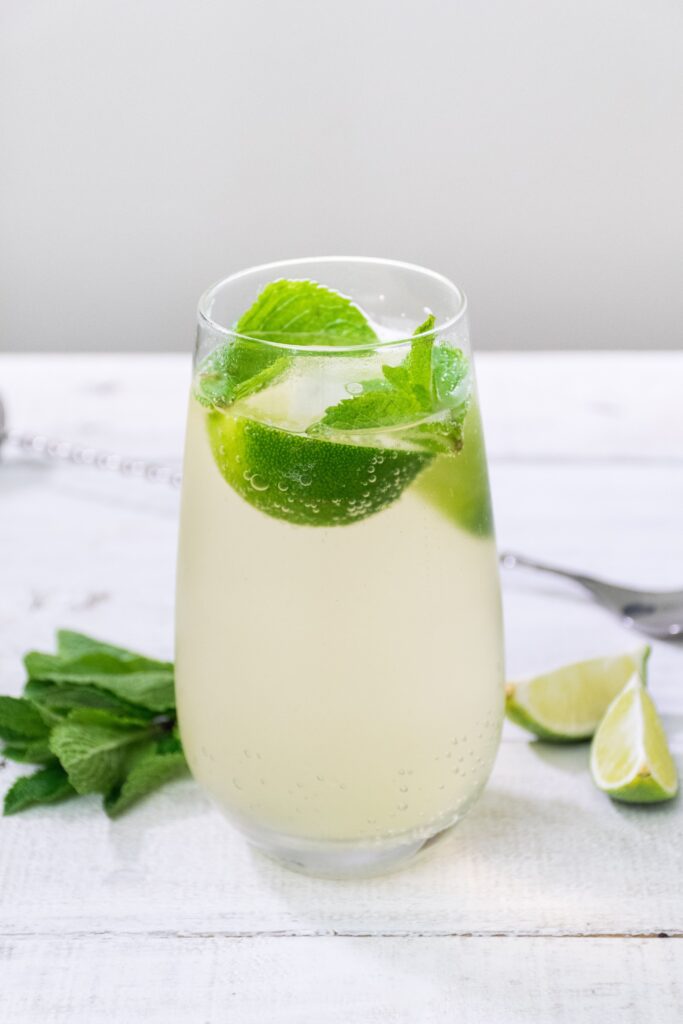Un viaggio nella nostra adorata bollicina : il Prosecco DOC
A journey into the bubble we all love and cherish: Prosecco Doc.
Prosecco is one of the most worldwide consumed sparkling wines, and it comes with no surprise. It is perfect for aperitivo, it is so easy to pair with food, to be drank alone in peace. Prosecco has become so popular that last year producers even sparked concerns of a global shortage! The Horror!
Useless to try to describe what a sad life ours (and yours) would be without Prosecco, but very useful instead to discover a few tidbits about the bubbly that is slowly rewriting the history of Italian viticulture.
Sit back and relax as we begin this journey into the lands of the world’s most beloved Italian sparkling wine, and why not, in the meantime we recommend a nice chilled glass of Prosecco DOC so you can totally immerse yourself in this tale.
’Twas a lovely day in a county in Friuli Venezia Giulia.
Its 500 something in Friuli Venezia Giulia, Italy as we know it and love it today didn’t exist yet, but its climate was already amazing, so was its biodiversity.
The Romans, bananas for our beloved wine called Pucino at the time, even though it was a dry white wine then, (castellum nobile vino Pucinum), wrote poems and sonnets as did for example by Pilino il vecchio, and it was the favourite wine of empress Livia (emperor Augustus’ wife).
Prosecco DOC, a wine we have come to love, began to be produced in the modern way only in the nineteenth century, making it one of our greatest oenological “discoveries.” Its name comes from the little town close to Trieste where the white variety of grapes, called Glera are cultivated.
The Prosecco DOC, or “Denominazione di Origine Controllata,” is the broadest geographic area where Prosecco can be produced. DOC can be translated to “Controlled Designation of Origin” and it is an epitome of Italian quality. The designation ensures that the bottle of wine in your hands is guaranteed to come from this area only and that it was made following specific winemaking practices and standards.
To go further in depth you will be able to find Prosecco coming from different provinces which are specialised in the production of the sparkling wine: in Veneto Venice, Vicenza, Padua, Belluno and Treviso; and in Friuli Venezia Giulia you can have prosecco DOC produced in the cities of Trieste, Udine, Gorizia and Pordenone.
But what is Prosecco you ask?
To put it easily, Prosecco is a sparkling wine mainly produced with Glera grapes in two Italian regions as stated above: Veneto and Friul Venezia Giulia.
It can only be produced within a specific geographic border in this part of Italy as we stated before.
The glera grapes make it that the main aromas in Prosecco are white fruits and flowers, typical of the varietal. The perlage in Prosecco is delicate and elegant bubbles. You’ll find in your studies (yes that indeed means drinking plenty of sparkling wine) that good quality Prosecco can offer scents that reminisce of hazelnut, vanilla, banana, honeycomb, tropical fruit and cream.
Wines produced through the Martinotti method take a shorter time to produce.
That been said, you might believe that one method is superior to the other, not necessarily, it just makes for two very different type of wines. The Martinotti method produces a lighter, fresher, younger wine designed to be enjoyed in lightness. In fact, Prosecco is not meant to “age” it is a ready-to-drink wine, to be drunk in a couple of years.
We have spoken a lot about methods, but what do they mean, how do make a dry white wine into Prosecco?
As we said a few lines above, the method that is used to produce Prosecco involves the use of autoclaves and is called Charmat-Martinotti. This method is different from “Méthode Champenoise” which is the method of producing Champagne, also called Metodo Classico.
In this quick bullet point are the steps for Prosecco production:
- First starts the grape harvest, at the time when there is perfect balance between sugar and acid component.
- You would then gently press the grapes to produce a juice, clear and crisp.
- Once you have your beautiful “juice” you would place it in a tank, normally made of stainless steel, for a maximum of ten days. This process, the first fermentation, will produce a still white wine.
- This is the step where bubbles come from: you would transfer the “base wine” we have made, adding sugar and selected yeasts to the base wine and moving the whole ordeal in a sealed and pressurised stainless-steel tank, also known as “autoclave”. The wine will stay there for a range of time that goes from minimum 30 days (60 for Prosecco Rosé) to 6 months. What happens during that time, the second natural fermentation, is simplicity at its best, with a sprinkle of magic, the sugar and the yeast in the concoction will produce Co2 during the fermentation process, simply because sugar becomes alcohol, the bubbles have nowhere to run to and remain trapped in the wine, again because we had trapped and sealed them in an autoclave.
- After the second fermentation has finished, the wine will have to be filtered to remove any residual yeast or sediment.
- A special bottling machine assures that the same amount of pressure that was in the tank goes for any single bottle.
- Last but not least, labelling
Now that the more studious part has gone by, let’s get down and dirty: What food do I pair with my bottle of Prosecco?
Prosecco is extremely versatile, you can pair it with many different types of food. Because of its delicate bubbles, and balanced acidity, Prosecco makes for a perfect pairing to a juicy, sexy charcuterie&cheese board and a huge variety of other appetisers. You name it, it goes well with Prosecco Doc! The gentler bottles of Prosecco are a marvel paired to spicy and creamy dishes, trust us, try it with a Tom Yum from Thailand – or a curry.
To close this brief story about our lovely sparkling wine, the only thing left to say is: whenever you crave something fresh, grab a glass, or a bottle of Prosecco DOC. You won’t regret it, actually you might regret not having another one on ice.
Football-television metaphor aside, one fact remains: the Glera grape variety, historically widespread in the Veneto region, forms the basis of Prosecco DOC, as its grapes must be contained in a minimum percentage of 85 percent within what is the world’s best-known sparkling wine. The remaining 15 percent can be made up of native varieties such as Verdiso, Bianchetta Trevigiana, Perera and Glera Lunga and international varieties such as Chardonnay and Pinot.
The Glera vine is intrinsically linked to the Veneto region, but in the years its cultivation has spread to Friuli-Venezia Giulia. In fact, one could speak of a return to its roots since it is precisely a town near Trieste, not coincidentally named Prosecco, that is the place of origin of our favorite.
Glera is a type of white grape. Its branches are dark hazelnut in hue and produce clusters of straw-colored grapes, and its use dates back to the time of the Ancient Romans, who considered Pucino wine-the ancestor of our Prosecco-a true elixir of youth.
Robust and vigorous, the Glera grape variety gives Prosecco DOC a very pleasant, as well as very recognizable, acidulous note and elegant fruity aromas. In defining the characteristics of Glera, further differences can be noted according to the area of cultivation: the different climatic and soil conditions in fact give the vines at higher altitudes floral and fruity notes; in the mid-hills, the scents are citrusy and recall green apple; floral and fresh fruitiness instead denote those of the plains.
After the harvest, the production process of Prosecco DOC begins through autoclave fermentation using the Martinotti-Charmat Method.
In fact, the refermentation in autoclave enhances the characteristics of the grapes, especially the floral and fruity scents. The semi-aromatic Glera variety, thanks to a sparkling period (i.e., alcoholic fermentation in a closed environment, where the carbon dioxide that develops from this process, being “locked up,” is naturally assimilated into the wine) 30 days long for Prosecco DOC and 60 days for Prosecco DOC Rosé, thus sees its typical and delicate scents of wisteria, jasmine, pear, green apple and citrus fruits amplified in the glass.
The Spritz, Prosecco DOC and Veneto are connected by a double wire that can never and for no reason in the world be broken. One lives in function of the other and vice versa, exactly as it happens in those married and quite broken-in couples with a very good and well-behaved son. One third Prosecco DOC Brut or Extra Dry, one third bitter and one third sparkling water, and it’s immediately Spritz (but also party): thus was born one of the most popular and well-known cocktails in Italy and the world. Synonymous of aperitif, the spritz has been a protagonist since the mid-19th century in the Austro-Hungarian period.
It is said that the original recipe came about by chance, when the Austrians, in order to dilute the wine to make it less alcoholic began to add seltzer water, a particularly carbonated water that was literally sprayed to water it down. This gave rise to the German name spritzen, which means, precisely, “to spray.”
As the centuries passed, the hunch of having a drink with great potential on one’s hands became a certainty to the point of giving rise to more or less well-known and improvised reinterpretations. Depending on the region, or even the bar within the same city, ordering a Spritz turns out to be an experience that is never the same: in Treviso, for example, we find Prosecco DOC Brut or Extra Dry and Aperol or Campari red with a slice of orange or olive; in Venice, they used Select or Cynar. And again, in Udine the recipe calls for Aperol or Campari and a lemon peel; in Trieste the Austro-Hungarian tradition with wine and sparkling water endures.
50 shades are probably too many, however, we can still stay on topic: so here are 7 variations of Spritz for 7 brothers (or for anyone who doesn’t want to miss the opportunity to toast without getting bored).
Bitter Spritz. Substituting Campari for the classic Aperol gives this version a more bitter and persistent aftertaste. The procedure and proportions to follow are the same: in a tumbler or goblet, pour the Prosecco DOC Brut or Extra Dry, add the bitter and complete with sparkling water; finally decorate with an orange slice and serve with plenty of ice.
Spritz Select. Known by some as the true “Venetian Spritz,” this version, rather than being a true reinterpretation, competes with the traditional recipe: the only difference is the addition of Select instead of bitter. (For the beginners, this is a citrus liqueur with a bright red color and sweeter taste, enhanced by the combination of orange or lemon slices).
Cynar Spritz. A complex, almost meditative Spritz. The aromatic notes of the artichoke bitter make it less playful than the classic cocktail, but at the same time less citrusy than the Select Spritz. The Cynar Spritz represents a pleasant middle way, therefore, in which the bitter-sweet component of the artichoke blends well with the freshness of Prosecco DOC.
The Pirlo. As Spritz is called in Brescia, made with Prosecco DOC, bitters and sparkling water, but presented in a scenic balloon glass with a slice of orange.
White Spritz with lemon. Trieste’s take on the Spritz. The crystal clear color will make you think you are drinking a simple soda, but at the first sip you will be overwhelmed by an unexpected surprise. A perfect blend of Prosecco DOC, soda and lemon juice perfect for all tastes, even for those who don’t like excessive alcohol levels.
Mexican-style Spritz. An exotic and different version from the usual: in a cocktail glass mix agave syrup, Vermouth, Cointreau, Prosecco DOC Brut or Extra Dry, and of course accompany it with tacos and guacamole.
Spritz Hugo. Born in South Tyrol, from the skilled hands of bartender Roland Gruber. Prosecco DOC Brut or Extra Dry, two mint leaves, a dash of soda, a drizzle of elderflower syrup. The extra kick? A drizzle of lime or lemon juice that makes the Hugo less sweet and “one-sided.”

What perlage means and why it is an important feature in Prosecco Doc
Perlage is an oenological term used to describe the bubbles inside a glass of sparkling wine that, rising to the surface in subtle paths, resemble precisely pearl necklaces. For connoisseurs, perlage is as important an indicator of the quality of a Prosecco (or sparkling wine) as its taste.
These numerous “pearl necklaces” are the result of the second fermentation of the wine that takes place in the autoclave: in fact, at this stage, the activity of sugars and yeasts leads to the production of ethyl alcohol and Co2, which does not escape from the tank and remains trapped in the wine in liquid form. CO2 will also be present after bottling, thanks to the high pressure inside the glass bottles.
When the bottle is opened and the wine poured, the sparkling wine is suddenly at normal atmospheric pressure, releasing all the Co2 as bubbles. Thin bubbles in a Prosecco are evidence of age: the Co2 is trapped under pressure in the liquid state; once released, since it is no longer compressed by the pressure, it returns to the gaseous state in the form of perlage.
If a prosecco has thin bubbles, it is not a guarantee that the product is of high quality; it is only reliable evidence of its age: over the years, sparkling wine loses carbon dioxide through the wine cap and the bubbles lose intensity and size.
Another crucial factor in bubble behavior is temperature. This does not affect bubble size much, but it does affect the viscosity of the sparkling wine. At slightly warmer temperatures, the wine is less viscous, thinner, and the speed with which the bubbles-and thus the carbon dioxide particles-leave the glass is greater, causing the effervescence to run out much faster.
In generally, Prosecco – and sparkling wine – drinkers much prefer slowly rising, visually more attractive bubbles, and a cold wine is preferred. But if the wine is too cold, the aromas are less perceived by the drinker. So there is no perfect serving temperature, it is a matter of compromise, although it is recommended to serve Prosecco DOC between 6°C and 8°C.
Gérard Liger-Belair, associate professor of physics at the University of Reims Champagne-Ardenne studied the behavior of perlage in a sparkling wine glass in an interesting experiment. He cleaned wine glasses with a very powerful acid to remove any dust particles or fibers. He then filled them with Champagne. Surprisingly, the physicist found that in such a perfectly clean glass no bubbles appear, and the wine appears still. In this case the dissolved carbon dioxide implements its escape as usual, but imperceptibly rising from the surface of the wine without effervescence
This occurs because a bubble, in order to form, needs a birthplace, a pocket of air to help it emerge from the liquid. Usually these bubble birthplaces are invisible cellulose fibers released by cloth or air on the inner surface of the glass. Wherever there is a fiber, a tiny bubble of gas forms in the liquid and then rises through the wine, growing in size as it picks up more carbon dioxide, until it bursts at the surface. One such fiber particle can produce tens of thousands of bubbles..
Therefore in a glass, washed and perfectly dried in a dishwasher, the sparkling wine will show less bubbles. This is why sparkling wine glasses are wiped with a dry cloth just before serving, and some sparkling wine glass manufacturers even laser-apply a special knurling to the inside of the glass.
Bubbles also help emphasize the taste and bouquet of sparkling wines. Through their continuous movement, they create currents in the wine that help circulate the liquid in the glass. Then, when they rise to the surface and burst, they release tiny particles of wine into the air above the glass, greatly accentuating the aroma.
A unique journey through the pizzerias and restaurants awarded by 50 Top Pizza and 50 Top Italy to disvover the most loved Italian dishes all over the world.
From the USA to Japan, 16 pizza chefs, chefs and manager tell us their experience, while suggesting a pairing with our beloved Prosecco DOC.
Are you ready to start?
RUSSIA
La Bottega Siciliana, Mosca
Quattro Formaggi with porcini mushrooms and black truffle, paired with Ponte 1948 Prosecco DOC Rosé Brut Millesimato 2020
Pizzeria 22 CM, Mosca
Pizza with figs paired with Cantine Maschio Prosecco DOC Extra Dry
THAILAND
Pizzeria Peppina, Bangkok
Pizza with tuna, Piennolo del Vesuvio tomato, stracciatella, capers paired with Bottega Gold Prosecco DOC Brut
Pizzeria Massilia, Bangkok
Pizza with beetroot and goat cheese paired with Zonin 1821 Prosecco DOC Brut
HONG KONG
Ciak in the Kitchen, Hong Kong
Pizza with tuna paired with Le Rughe Prosecco DOC Rosé Brut Millesimato 2020
![]()
In the last years, Prosecco DOC built the features of its story and its brand identity basing them on some unique ties with the
territory and its traditions, finding the right expression in communication activities in various fields, such as enogastronomy, art, culture, history, cinema, design and sport: it was 2016, and Prosecco DOC paid tribute for the first time to the “Adunata degli alpini di Treviso”: tradition, landscapes, men and women that deserved to be celebrated in a unique manner.

Three years later, to celebrate the ten years of Consorzio del Prosecco DOC being founded, a celebratory label and a stamp were printed.

In these five years, other relationships were sealed: the 50th anniversary of Barcolana, the biggest sailing regatta in the world, the celebration of artists’ pieces of work that stood out at Milano Triennale, the qualification of wine of honor at St. Peterburg’s Hermitage, to quote some of them. The aim was always the same: celebrate and support the Italian Genio and the conviviality that the cultural and sport initiatives behind every partnership bring with them. Even in this 2021, Prosecco DOC bottles dressed up with sartorial labels that are standard-bearers of different values: skiing’s aggregation, history’s elegance, design’s culture,
MotoGPTM’s dynamism.

The bottle for Cortina 2021’s Alpine World Ski Championships wore the National’s team jersey to highlight its support to a theme very dear to the Consorzio, such as sport: the aggregation of cultures and identities, team spirit and respect that are well rooted in the Prosecco DOC world. Moreover, Cortina’s candor and the elegance will be the background for 2026 Winter Olympics, with the aim of adapting to the territory and not viceversa: the establishments that will be used are already existing, and the new structures will be heritage for future generations. Safeguarding the territory and sustainability are values that are worthy to toast to with a glass of Prosecco DOC.

From the mountain’s candor to the indisputable style of one of the most loved Italian cities, Venice, that celebrates this year 1600 years, elegantly and stilishly. A toast to the Veneto capital that celebrates this year an important goal from its foundation, the 25th of March 421. To pay tribute to this already tested partnership, Consorzio Prosecco DOC dedicated it a sinuously elegant label that refers the city’s refined lines with a modern and international take, and will be the main bubbles for the numerous events scheduled until march 2022: Regata Storica, Mostra del Cinema and Salone Nautico will have as common denominator the enthusiasm that moves Prosecco DOC’s glasses.
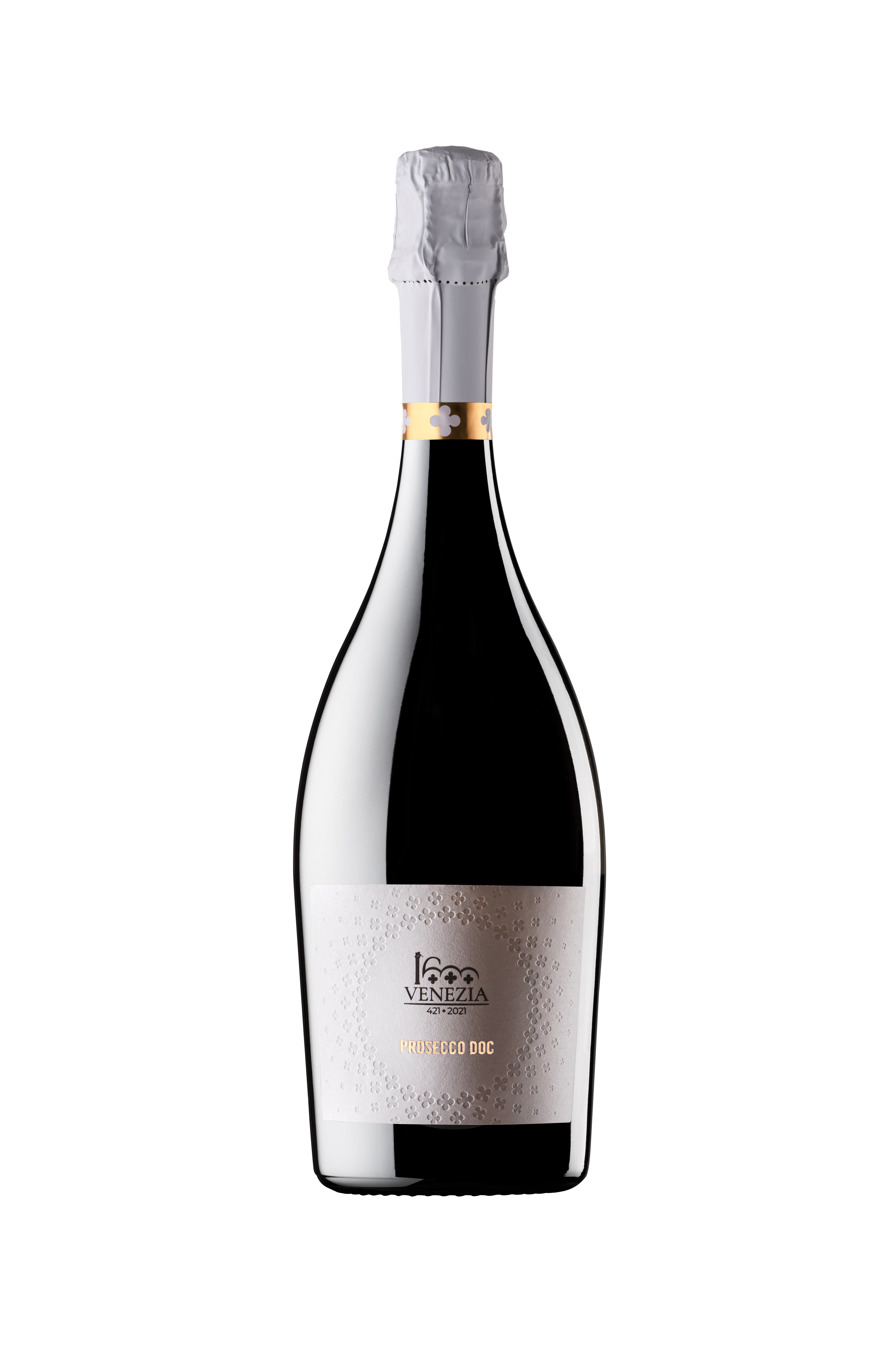
Elegance, balance and knowledge are the words that unite Prosecco DOC to Museo del Design di Milano. Prosecco DOC already patronized important entities such as Triennale di Milano, St. Peterburg’s Hermitage, Teatro Stabile del Veneto and this year decided to support the new ADI Design Museum in Milan as a place to narrate and enhance Made in Italy with an international take and a culture sense constantly renovating.


Adrenaline, overtakings and palpitations are the ingredients of MotoGP™, one of the most followed and loved sports in the world, that sees Prosecco DOC as Official Supplier since 2019, and one must not forget about Superbike (since 2013), Imoco Volley (since 2014) and the freshest news of this year: Benetton Rugby’s lions. The reason is simple: making a young audience, invested in this exciting sport, unusual places and enogastronomic traditions. And infinite reasons to toast, at the podium for the prizes, and for the get- together moments that MotoGP™ brings with itself.
The first time you see it fills the Tulip glass, it is an unexpected wonder, which deviates from the classic oenological white/red binarism and gives new colour tones to the traditional celebratory bubbles. A shade of pink full of warm, golden reflections, enhanced by the light perlage that goes up the glass, enchants even the most traditionalist (or sceptical) drinkers.
Visually silky, voluptuously fresh in the mouth: welcome Prosecco DOC Rosé, the colour (and flavour) that expands the range of the world’s most famous and iconic sparkling wine. New, or rather renewed over the years by increasing attention, both from the market and from the producers, who have pondered, bubble by bubble, how to enhance an already valuable product. Every drop of Prosecco DOC Rosé, every glass that is quick to serve, every bottle from which the state seal and the capsule with the Consortium logo are delicately removed, contains the absolute certainty of drinking a perfect unicum, with a clean yet profound flavour. In every sip of Prosecco DOC Rosé you can perceive the journey through Italy that the production chain, from the soft clouds of Veneto and Friuli Venezia Giulia, takes on and takes on, in a perfumed wave that reaches every last table, counter, grain of sand on the other side of the peninsula. But the right recognition, as in any self-respecting need or desire for enhancement, requires a step backward to know, unravel and reconstruct the details that led up to it. It’s called history, and Prosecco Rosé has more of it than we thought.
Despite those who dismiss it as a fashion in recent years, or worse still as a variant only appreciated by foreigners, guiltily downplaying its historical and oenological importance. It is partly true that rosé wines are particularly popular on the foreign market, but less so on the Italian market ( although it is slightly increasing), hence the international choice to call Prosecco ‘Rosé’. But to exclude them a priori would be to produce a misleading historical statement. In fact, it is history, preserved in the archives and steeped in local stories and data, that reconstructs how the rosé sparkling wine adventure began. Some sources have shown that the history of Prosecco DOC Rosé began around 130 years ago, in 1880, with the first timid blends of white and black grapes, which were fermented using the artisanal techniques of the time. (And immediately there arose in the hearts of all wine lovers the regret of not having been able to taste the unique flavour of the first Prosecco Rosé in history). It was then at the turn of the second and third millennia, between the 1990s and the early 2000s, that it emerged that 57% of the 347 wineries in the 9 provinces of the current DOC appellation vinified Glera and Pinot Nero grapes using the Martinotti method (which is how Prosecco DOC is produced) in customised, often creative and free interpretation proportions.
The first brick in the making and construction of the personal history of Prosecco Rosé. The slow evolution of food technology has helped to develop the best fermentation, sugar control, the addition of carbon dioxide, improving and standardising production methods. From there to applying them to different types of grapes, the step was only apparently short. Because in reality, to include Prosecco Rosé in the Prosecco DOC, the task was very demanding.
To enforce a millimetric specification such as that of Prosecco DOC means putting in place chemical analyses, organoleptic and sensory analyses, grape ripening and harvest times, fermentation durations, and so on throughout the entire production process. Extending the parameters and establishing precise must-have points is not so immediate: to many, they seem like cold numbers to be respected, the bureaucracy of the specifications is often read as a game for the creative flair of the producers, but in reality, it is the only guarantee of excellence that covers the entire chain from the first step, from the clod of earth to the sip in the glass. The process of modifying the production regulations to introduce the Rosé type under the protection of the Consortium began back in 2009, with the first proposals falling on deaf ears.
There was still not enough movement, or attention, in the sparkling wine-making of the Glera&Pinot Noir (vinified in red) blend, although some Prosecco Rosé was beginning to make its way. Faced with the ever-increasing demands of the market, which was growing proportionally, fixing the key points became an urgent necessity: work began in May 2019, and the expanded specification officially came into force on 11 August 2020. It contains everything that governs the Prosecco DOC Rosé appellation, starting with the organisation of the carefully regulated harvest, within the limits of the variable weather conditions of the spring-summer preceding the harvest. The Pinot Noir grapes ripen between the middle and end of August, the Glera grapes about two weeks later. It is a waiting game, when the Pinot Noir grapes are placed in contact with the skins for 5 to 10 days, depending on the shade of colour that the producer wants to give his Prosecco Rosé. In the meantime, the Glera grapes are harvested, the Pinot Noir grapes are freed from the skins and the preferred blend is made, respecting the proportions set out in the regulations (85% Glera, 10-15% Pinot Noir) and establishing sugar control: like its brother Prosecco DOC, the Rosé must also respect four types of “sugar content”, ranging from Brut Nature to Extra Brut, Brut and Extra Dry. The subsequent sparkling process, the moment that definitively defines the range of the sparkling wine, lasts 60 days and the bottle can finally reach the market. From there, it’s personal taste and matching. But there is an irreplaceable imagery that precedes, and embraces, the choice of Prosecco DOC Rosé: the freshness, the liveliness of a moment of escape from everyday life, the light idea of spring pink even in the middle of autumn. Hints of acacia blossom, violets and wisteria, and the fullness of red fruits with a touch of green apple and citrus fruits, are enhanced by an effervescence that is an invitation to life.
To toast, sweetly, to one’s own something to celebrate.
If we were to dot the i’s, lately not even Christmas has been “with your folks”, but splitting hairs is useless. The fact remains that Easter, compared to the December holidays, has always been freer, less traditional and independent. Translated: no set menu – colomba apart – and the opportunity to toast and dine with the bottles you love most, Prosecco DOC (obviously) included. More than “with whom you want”, perhaps it would be more appropriate to say “as you want”: after the year we lived – and we’re still living – we’ve learned that being slaves to obligations and conventions represents a weight that we no longer want to bear.
So, why not structure a Prosecco DOC-proof menu to maximize its floral and fruity aroma, as well as its fresh, light and lively flavor? Let’s start from a basic assumption: Prosecco DOC is synonymous of aperitivo (aperitif), of which it’s a kind of king, but it lends itself very well – in particular in its Brut version, drier and in line with a more international taste – for a consumption throughout the meal.
Bubbles have always been a perfect accompaniment to seafood crudités in general: with oysters, cockles, truffles or simply with scampi and prawns from Mazara del Vallo: Prosecco DOC, with its sharp but at the same time delicate taste balances the flavor of these ingredients, enhancing the aromas.
But there’s much more: fried sage leaves; canapés or cream puffs stuffed with smoked salmon or sturgeon; caviar and paté; shrimps in cocktail sauce; cheeses such as smoked scamorza, provola, ricotta or caciocavallo, sweet gorgonzola or medium-aged pecorino are perfect together with Prosecco DOC, as well as savory pies made with asparagus, radicchio from Treviso, onions or carrots. The association with recipes based on green vegetables such as zucchini, chards, or spinach is a win-win, especially if the latter are combined with ricotta – see under the heading Erbazzone or Torta Pasqualina. Delicate and elegant, Prosecco DOC is also excellent with pumpkin or cauliflower soufflé, as well as with potato or tartiflette flan.
What about meat and cold cuts lovers? Not even them are destined to remain dry- mouthed: it might seem a contradiction – being led to immediately think of a red when it comes to certain foods – yet a Prosecco DOC Brut is deliciously combined with mortadella or cooked ham (less with salami or raw ham, too spicy, which require a different support).
Green light for first courses with seafood or delicate meat sauces; vegetable soups and second courses that include baked fish (sea bream or sea bass) or white meats, especially poultry. If you are among those who need to keep in shape and do not like meals with many courses but prefer unique dishes or nice salads, Prosecco DOC – this time in its Extra Dry version – is the right choice to make more interesting apparently anonymous dishes. Some examples? A caprese with mozzarella, tomato and basil; a rice salad with summer ingredients; a Niçoise with fresh tuna and Cantabrian anchovies; an exotic fruit salad such as mango and avocado with a side of walnuts.
Having reached the end with the coveted dessert, it’s better to opt for a Prosecco DOC Dry, which with its delicate and fruity aroma – with hints of citrus, white peach and green apple –, with its savory, fresh and soft taste, and with its higher sugar level, served very cold it is suitable for combinations with dry or leavened pastry desserts (as the colomba). Woe to committing one of the most common mistakes: the bubbles of a dry sparkling wine are never accompanied by dessert; in this case the pairing rules follow the principle of concordance, that is sweet with sweet. Which, at a close look, will also allow you to cover all three types of sparkling wine in a single lunch: to be an Easter in the orange or red zone, which we will remember for life, it could have been much worse.
![]()
How to cool down during these upcoming warm months with a chill, refreshing Prosecco DOC and elderflower based cocktail. You’ll be the most requested bartender at family gathering and barbecues.
This refreshing aperitif, made of three fantastically simple ingredients, elderflower cordial (or liqueur as the all time favourite St.Germain) Prosecco DOC and a dash of seltzer water, is all you need to spend your warm spring days, contemplating life while sat under a willow tree – because who doesn’t spend summer like that – maybe wondering why you hadn’t heard of a Hugo sooner than right then and there. The sweet, earthy tones of elderflower pair fantastically with Prosecco DOC’s sharp and clean flavour.
Why have we kept it a secret for so long, you might ask?
Well we haven’t, as before 2005 this drink was not even a thing; It took Roland Gruber’s beautiful mind and palate to come up with the Hugo cocktail. The discovery took place in Italy’s Tyrol region, in the beautiful dolomites where Mr. Gruber has created a modern classic that is so deeply anchored in our hearts and cocktail lists, that it resembles the ascension to fame of the Penicillin, created at New York’s Milk and Honey by star bartender Sam Ross, in the same year, 2005.
What a truly great year for cocktails.
He has gifted us with something that we did not know we were missing, and there is no doubt on why it became such a huge success.
The other reason for its success?
Prosecco DOC, clearly.
Italy’s sparkling wine that is becoming increasingly loved outside of our country, also known as the forefather – or mother – of the aperitivo scene, and the elderflower’s fresh, botanical and fruity tones give it an incredibly jammy mouthfeel.
Lets talk a bit of history here:
Place yourself sunbathing in the Dolomites valley, it’s mid-spring, the days are getting longer you can almost feel summer creeping around the corner, it is at this exact point in time in which foragers around the world unanimously shout to their families “ go fetch the elderflowers, before they disappear”.
The tradition, the history, the foragers, tell you should only utilise and harvest the flowers mid morning, as far away as possible from car’s fumes, when the small closed flowers begin to sunbathe – just like you would – and they are starting to channel all the goods the sun has to offer them , but they haven’t yet been exposed to too much heat, that is why you wouldn’t collect them in the late afternoon… Elderflowers are as beautiful and tasty as fickle, as they are unfortunately only in bloom for a single month throughout the year, from late May to end of June.
We would like to help you turn this fantasy easily into reality by giving you a simple Elderflower cordial recipe, you’ll need only water, lemon and sugar and the superbe white flowers to create a tasty beverage. (For our favourite recipe just keep scrolling!)
The elderflower cordial is one of those incredible nectars that will leave you begging for more, as even if it is high in sugar, it doesn’t bother the consumer as one might think. How you ask? Well, as per everything that is sugary and has to be preserved a fair amount of time, we cut it with some fresh zesty, acidic lemon, that will cut thought the sweetness enough to make it unforgettable. A true sign of summer’s beginning.
Another brilliant aspect of this drink is its low – alcohol content, and the dryness and freshness of Prosecco that make it an unmitigated success for an Aperitivo. Now , decades have gone by, and Hugo remains in our hearts and minds : and that is how you create a modern, new classic starting from tradition.
Just like the incredibly famous Aperol or Campari Spritz, Hugo cocktail has all the Italian favourites, it is refreshing, sweet, zesty, and a beautiful crisp bouquet thanks to the final mint garnish.
Talking about tradition, what differs between the traditional Spritz and a Hugo Spritz?
It is said that the name Spritz comes from the German “spritzen”: during the nineteenth century when Veneto was under the Hapsburg rule, the German speakers in the area that were there as diplomats, merchants, visitors etc.. were not used to the potency of our wines, and they used to “cut” it down with a dash of water. “Spritz me up this wine will you barkeep”.
As you might imagine, sparkling wine in the area was already all the rage, so the first spritzes were sparkling glera and water, and as this concoction became increasingly popular around Veneto, bartenders and hosts in general began playing with this idea of spritzes and making it their own, blending them to their taste. It became the most served drink in the beginning of the twentieth century, catering to both the people in the streets of Italy as a pre-dinner drink, and the lavish Austrian and German society events.
Aperol spritz was already Italy’s favourite spritz in the fifties. The incredibly famous aperitif was created in 1919 in Padua by the Barbieri brothers, as a bitter aperitif made of rhubarb, gentian and china, its colour reminisces of Campari’s bright orange, but with a lower abv.
The Hugo was created as variation to an Aperol Spritz, Mr. Gruber must have been inspired by the beautiful intoxicating scent of the elderflower trees growing on the side of the alps. The bitterness of the Aperol is replaced by a dash of elderflower cordial its taste incremented by lime and mint, making a lighter, crisper drink.
How to: Hugo cocktail for beginners.
It is devastating how easy it is to make this drink, and how well it fits in any sort of “gathering”.
It could be easily made at home, for a party, for your 5pm lockdown Aperitivo, during a barbecue, a picnic and so on.
The ingredients you will need are as follow, and the glass you’ll need is a large wine glass:
– Elderflower cordial, to taste
– Prosecco DOC, your favourite brand will do.
– dash of sparkling water or seltzer
– a squeezed lime wedge
– mint is the classic garnish for it, but we say go wild, try something new, something you like.
– Ice
How to mix it, serve it and drink it
There are just a few simple steps that almost any Italian (certainly everyone above 18 from Veneto and Friuli Venezia Giulia) know by heart.
Firstly fill you wine glass with a lot of ice, don’t be shy, the more ice the less watery your drink will get, then add the elderflower cordial and the lime juice, plus the lime wedge it came from and mix it a bit.
Add the sparkling water to it, mix a bit again, and top up with your favourite Prosecco DOC.
You can certainly use Prosecco DOC Rosé to recreate the orangish hue of Aperol Spritz.
Garnish how you please.
For the cordial recipe, follow river cottage’s step by step guide to an amazing Elderflower cordial.
Enjoy responsibly.
![]()
